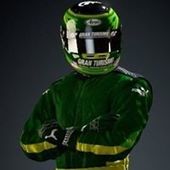Hi fellow game devs.
I'm trying to implement a center differential in my racing game. However, there are a few things I don't understand about its operation. I'm going to implement it with 2 basic parameters: locking percentage and torque split percentage. Locking percentage is basically how strong the locking torque is before 2 sides break away and rotate at different speed. Torque split is how much torque is going to either side, in case of a asymmetrical differential.
1 - Let's say it's a STi with 40 Front/60 Rear torque split, so 40% of the torque goes to the front diff, and 60% to the rear. Assuming equal inertia at both ends, and the diff is open, the front and the rear differential should be rotating at different speed. The confusing thing is how locking percentage works with torque split. The purpose of locking percentage is to keep the 2 sides rotating at same speed. Then with the asymmetrical split like above, then would this split defeats the purpose of locking percentage? Would it just be better to have symmetrical 50/50 split and a desired locking percentage? Also with the asymmetrical split, would the diff be under heavy load all the time, trying to make 2 sides rotate at same speed, thus wearing it out?
2 - Also there is one thing that bothers me about viscous diff. Let's assume a situation where the differential torque is larger than the drive torque (from engine) to the current wheel, resulting in a negative total torque output, causing the wheel to rotate backwards. This led me to think about how to actually integrate the diff torque. Should I be integrating it as a braking/friction torque instead of the driving torque like the engine? Which means the torque is applied only if the integrated speed is ≥ 0, otherwise the speed will be 0)
I'm sorry for a wall of text. Thank you everyone for bothering with this boring question ?






